Term 2 Unit 3 | History | 7th Social Science - Rise of Marathas | 7th Social Science : History : Term 2 Unit 3 : Rise of Marathas and Peshwas
Chapter: 7th Social Science : History : Term 2 Unit 3 : Rise of Marathas and Peshwas
Rise of Marathas
Rise of Marathas
Factors Responsible for
the Rise of Marathas
Geographical Features
The physical features of the Maratha
country developed certain peculiar qualities among the Marathas, which distinguished
them from the rest of the people of India. During the sixteenth century, the sultans
of Bijapur and Ahmednagar had recruited them to serve in cavalry. Their presence
was helpful to the sultans in balancing the political ambitions of the Muslim soldiers
in their service. The rocky and mountainous terrain gave protection to the Marathas
from invaders. It proved to be advantageous in guerrilla warfare for Marathas.
Bhakti Movement and the
Marathas
The spread of the Bhakti movement in
Maharashtra helped the Maratha people develop consciousness of their identity and
oneness. It promoted a feeling of unity, especially in terms of social equality,
among the Marathas. In the Maratha region, the religious leaders were drawn from
different social groups. Eknath, Tukaram and Ramdas were the noted Bhakti saints.
Tukaram and Ramdas had considerable influence on the life of Shivaji.

Literature and Language
of the Marathas
Marathi language and literature also
served to develop unity among the people. Hymns composed in the Marathi language
by Bhakti saints were sung by people of all castes and classes.
Shivaji
Shivaji, born in 1627, grew up under
the care of his mother, Jijabai, who influenced him with stories from the Hindu
epics, Ramayana and the Mahabharatha.
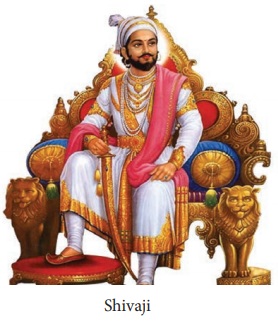
Shivaji’s teacher and guardian, Dadaji
Kondadev, trained him in the art of horse riding, warfare and state administration.
At the age of eighteen in 1645, when he had just entered the military career, he
successfully captured Kondana, a fort near Poona. The following year, he took the
fort of Torna. Then he succeeded in conquering Raigarh, which was rebuilt by him.
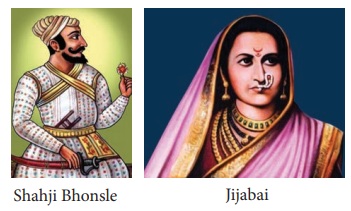
Shivaji’s Confrontation
with Sultan of Bijapur
Shivaji became totally independent after
the death of his guardian Kondadev (1649). He also got his father’s jagir transferred
to him, which was earlier looked after by Kondadev. The strength of his army was
Mavali foot soldiers. With their help, Shivaji conquered many of the hill forts
near Poona. He captured Puranthar from the Mughals. Shivaji’s military raids angered
the Sultan of Bijapur. He held Shivaji’s father captive and released him only after
Shivaji promised to suspend his military raids. Shivaji kept his word and remained
at peace with Bijapur from then on till his father Shahji’s death. During this period
he toned up his administration.

Consolidation of Maratha
Power
Shivaji resumed his raids after his father’s
death and conquered Javali (1656) from the Maratha chief Chandrarao More. He also
reduced all the lesser Maratha chiefs around Pune to subordination. The soldiers
of Bijapur from the hill fortresses acquired by Sultan of Bijapur were driven out
and replaced with his own commanders. These moves and the defeat of Bijapur army
sent to punish Shivaji alarmed the Mughal officials. When the Mughals made a punitive
expedition, Shivaji boldly confronted them. In 1659 he killed Afzal Khan, a notable
general of Bijapur. In 1663 he wounded and chased away the Mughal general and Aurangzeb’s
uncle Shaista Khan. To cap these bold acts, he audaciously directed his soldiers
to plunder Surat (1664), the major Mughal port on the Arabian Sea.
Shivaji and Aurangzeb
After Shivaji plundered Surat, Aurangzeb
swung into action. An army under the command of a Rajput general, Raja Jai Singh,
was ordered to destroy Shivaji and annex Bijapur. Shivaji finally sought peace,
yielded the fortresses he had seized and accepted service as a mansabhdar in the
Mughal service for the conquest of Bijapur. He also agreed to visit the imperial
court at Agra, on the advice of Jai Singh only to suffer humiliation, which led
him to escape, by hiding in a basket.Aurangzeb was determined to stop the Maratha
interference in his expeditions against the Deccan kingdoms. He attempted to patch
up with Shivaji, but those efforts failed. In 1670, the Mughal army was helpless
when Shivaji again plundered Surat. In 1674, Shivaji crowned himself by assuming
the title of Chhtrapati and the coronation of Shivaji was celebrated with great
splendour at Raigarh, as the occasion was the founding of a new kingdom and a new
dynasty. Shivaji’s aged mother Jijabai, who had lived to see her son crowned the
king, passed away a few days after the coronation, with her life wish fulfilled.
Shivaji spent his last years trying to bring his son Shambhuji into his ways as
he had defected to the Mughals. He fell ill with fever and dysentery and died in
1680.
Chhatra (parasol) pati (master or lord),is the Sanskrit equivalent
oking or emperor, and was used by the Marathas, especially Shivaji.
Maratha Administration
under Shivaji
Shivaji’s political system consisted of three circles. At the centre
was the swaraj. Shivaji was caring and would not allow the people to be harassed
in any way. In thesecond circle, Shivaji claimed suzerainty, but he did not administer
them himself. He protected the people from loot and plunder for which they were
required to pay Chauth (one-fourth of the revenue as protection money) and Sardeshmukhi
(an extra one-tenth, as the chieftain’s due). In the third circle, Shivaji’s only
objective was plunder.
Deshmukhs held sway over rural regions and their control was over between
twenty and hundred villages. Each village had a powerful headman (Patil), who was
assisted by a village accountant of a keeper of records (Kulkarni). In the absence
of a strong central government, these local community level officials functioned
as the true government.
Army
Shivaji gave utmost attention to his
army and training of its personnel. In the beginning, the backbone of his army was
the infantry. But as his campaigns extended into the plains, his cavalry grew in
size and importance. Every soldier was selected personally by Shivaji and was taken
into service on the assurance of a soldier already in service. Shivaji took great
care in the maintenance and security of his forts. Retired captains holding a high
reputation were put in charge of guarding the forts.
Ashtapradhan
Shivaji designated eight ministers as
the Ashtapradhan, each holding an important portfolio. Peshwa was the equivalent
of a modern prime minister in the Maratha Empire. Originally, they were subordinates
to the Chhatrapati. But, in course of time, especially from the time of Sahu Maharaja,
Peshwa became the de facto Maratha ruler while the Chhatrapati was reduced to the
position of a nominal ruler.
Shivaji was influenced by the Mughal
revenue system. The assessments were made on the actual yield, with three-fifths
left to the cultivator and two-fifths taken by the government. In judicial administration,
civil cases continued to be decided by the panchayat, the village council, while
criminal law was based on the shastras, the Hindu law books.
Responsibilities of the
Ashtapradhan
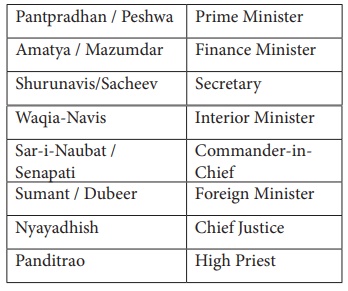
Shambhuji
Shambhuji succeeded Shivaji after a succession
tussle with Anaji Datto. There were family feuds splintering the Maratha kingdom.
Durgadas of Rathore Marwar and Aurangzeb’s rebel son Akbar arrived in Maharashtra
and took shelter in Shambhuji’s court. Aurangzeb viewed these developments very
seriously and took all out efforts to finish off Shambhuji. Marathas under Shambhuji
were in no position to resist the Mughals. Aurangzeb himself arrived in the Deccan
in 1681. Aurangzeb’s main goal was the annexation of Bijapur and Golconda. These
two sultanates fell to Aurangzeb by 1687. In little over a year, Shambhuji was captured
by the Mughals and, after torture, put to death.
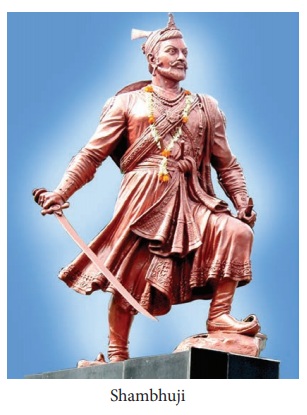
Shambhuji was under the wicked influence of his family priest Kavi
Kalash. Kavi Kalash was the caretaker of Shambhuji in Varanasi during Shivaji’s
flight from Agra. He later brought Shambhuji safely to Raigarh. His dominance in
the Court became absolute in course of time, as Shambhuji looked to his advice for
everything. Kavi Kalash was a distinguished scholar and poet. But he was a practitioner
of witchcraft. So the orthodox Hindus in the court had developed a deep hatred for
him. When Shambhuji was captured by the Mughal army, he was found to be in the company
of Kavi Kalash. So both of them were subjected to all forms of torture and then
executed by the orders of Aurangzeb.
Shahu Maharaja
Shivaji's grandson Shahu means honest,
originally a name given by Aurangzeb to contrast his character with that of Shivaji)
ruled from 1708 to 1749. During the first half of the eighteenth century, consolidation
of royal power was achieved through conferment of royal entitlements upon those
who served Shahu.
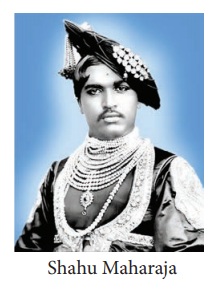
During Shahu’s 40-year reign there was
increase in the territory under the Maratha control, from which tribute was regularly
extracted. More centralised and strong state structure also began to take shape.
Every household, including that of landed household, profited from state employment.
Related Topics